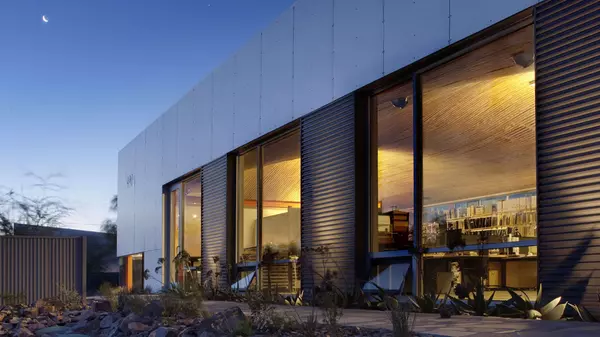San Diego FC holds grand opening for residential youth academy, its ‘vertical DNA strand’
San Diego FC hosted the grand opening for its youth academy Friday, sparing no expense with a giant air-conditioned tent and a stage flanked by enormous video boards, with a speaker lineup that included both majority owners, Major League Soccer’s commissioner and the president of Qualcomm.
“The end of the beginning,” SDFC CEO Tom Penn called it.
The expansion franchise played its inaugural match in February and hosts the San Jose Earthquakes on Saturday night at Snapdragon Stadium in its home regular-season finale. But the true essence of this club, the final piece of the puzzle — “the vertical DNA strand,” MLS commissioner Don Garber calls it — is the fully scholarshiped residential academy that is the bedrock of a philosophy to develop and play homegrown talent as young as 16.
It is part of the Right to Dream empire that began with a modest academy in Ghana in 1999 and also has campuses in Denmark and Egypt. San Diego’s is based at the $150 million Sharp HealthCare Performance Center on the western edge of the Singing Hills golf course owned by the Sycuan tribe, a prominent member of the club’s ownership group.
The first class of 19 players arrived in August, ages 11 to 13. New classes will be added each subsequent year.
Resort hotel rooms were converted into dormitories, game rooms, classrooms and a library. They train steps away on five pristine fields (three grass, two turf). They eat meals in a cafeteria shared by the senior team. There are inspirational quotes on seemingly every wall: “If you want to go fast, go alone. If you want to go far, go together.” The extensive staff even includes a therapy dog trainer.

The vision, as it is at other Right to Dream facilities, is to have no cuts and a 100% retention rate through age 16, when players reach a fork in the road. Some will pursue professional soccer, ideally with SDFC. Others will go to a prep school with an eye toward a college soccer scholarship.
“What they’re building here is unprecedented in our country and, quite frankly, is unprecedented in the world,” Garber said. “It’s taking kids in residence and developing these players but also developing them as young men. … There isn’t anything in MLS that it could be compared to.
“It has a vertical DNA strand connection from what they want their players to be thinking about on and off the field from the time they’re 10 till they’re first-team players, and I think that’s unique. They have more young players playing minutes than any other (MLS) club, so they are walking the walk that they’re talking. I hope that inspires other MLS clubs to be thinking about building from the bottom up.”
Garber was asked if it compares to Barcelona’s famed La Masia youth academy.
“I’m not sure Barcelona is thinking about, when a player is in their academy and he’s not going to make it, continuing to keep him in residence and paying for his schooling through 16,” he said. “Think about that. That is an amazing commitment to a family.”
Ten of the 19 in the inaugural class are from San Diego County. The rest are from elsewhere in California as well as Nevada, Hawaii and Mexico.
They’ll use many of the same Right to Dream training methods and implement a similar, possession-oriented, attacking style that has SDFC leading the Western Conference with three games left.

The San Diego academy has its differences, though. In Ghana and Egypt, players are start at 9 or 10 and routinely go months without seeing their families for both logistical and cultural reasons. Here, players phone parents twice a day and can leave campus with them for dinner once a week. Every six weeks, they are released for a week to their families.
Players were selected after a lengthy scouting process on the field but also after multiple home visits with parents, searching for a mutual fit that includes a commitment to academics.
“In Ghana and Egypt, it’s been going a lot longer and there’s a lot more natural credibility,” said John McGuigan, SDFC’s head of academy football. “Here, we have to build that. The boys have an extraordinary talent, so the families are being asked to make an extraordinary choice to send their boys here, which is obviously a huge leap of faith on their part. We’re grateful for the trust they’ve given us.
“I think it’s a really important thing for people in the community to know that this isn’t the military. A lot of people think coming to residency is crazy, and I completely understand. But when they really understand the history of Right to Dream and why we do it — so we get more time with the boys to work on academics and character — I think it starts to make sense.”
Eagle de Knijff, an 11-year-old central defender nicknamed “Aguila” by his new teammates, is from Las Vegas, the son of a Ghanaian mother and Swedish father. Does he miss them?
“I mean, it’s hard,” he said. “But the staff all around here take care of us very well as if they were our parents.”
Was it a difficult decision to enroll?
“Not really,” he said.
Right to Dream was founded by former Manchester United scout Tom Vernon at his home in Accra and added a Danish academy in conjunction with first-division club FC Nordsjaelland. Mohamed Mansour, the Egyptian billionaire who serves as SDFC’s chairman, acquired a majority stake in 2021 and immediately began construction of an academy in a Cairo suburb.
“This is not a factory,” Mansour said in remarks to the overflow crowd inside the air-conditioned tent Friday. “This is a family that spans the globe.”
Mansour closed his speech with a prediction:
“Within five years,” he said, “I expect this academy to produce one of the country’s best players. It’s going to happen.”
San Diego FC (17-8-6) vs. San Jose Earthquakes (9-14-8)
When: 7:30 p.m. Saturday
Where: Snapdragon Stadium
Streaming: AppleTV
Radio: 760-AM, 1700-AM (Spanish)
Categories
Recent Posts










GET MORE INFORMATION


